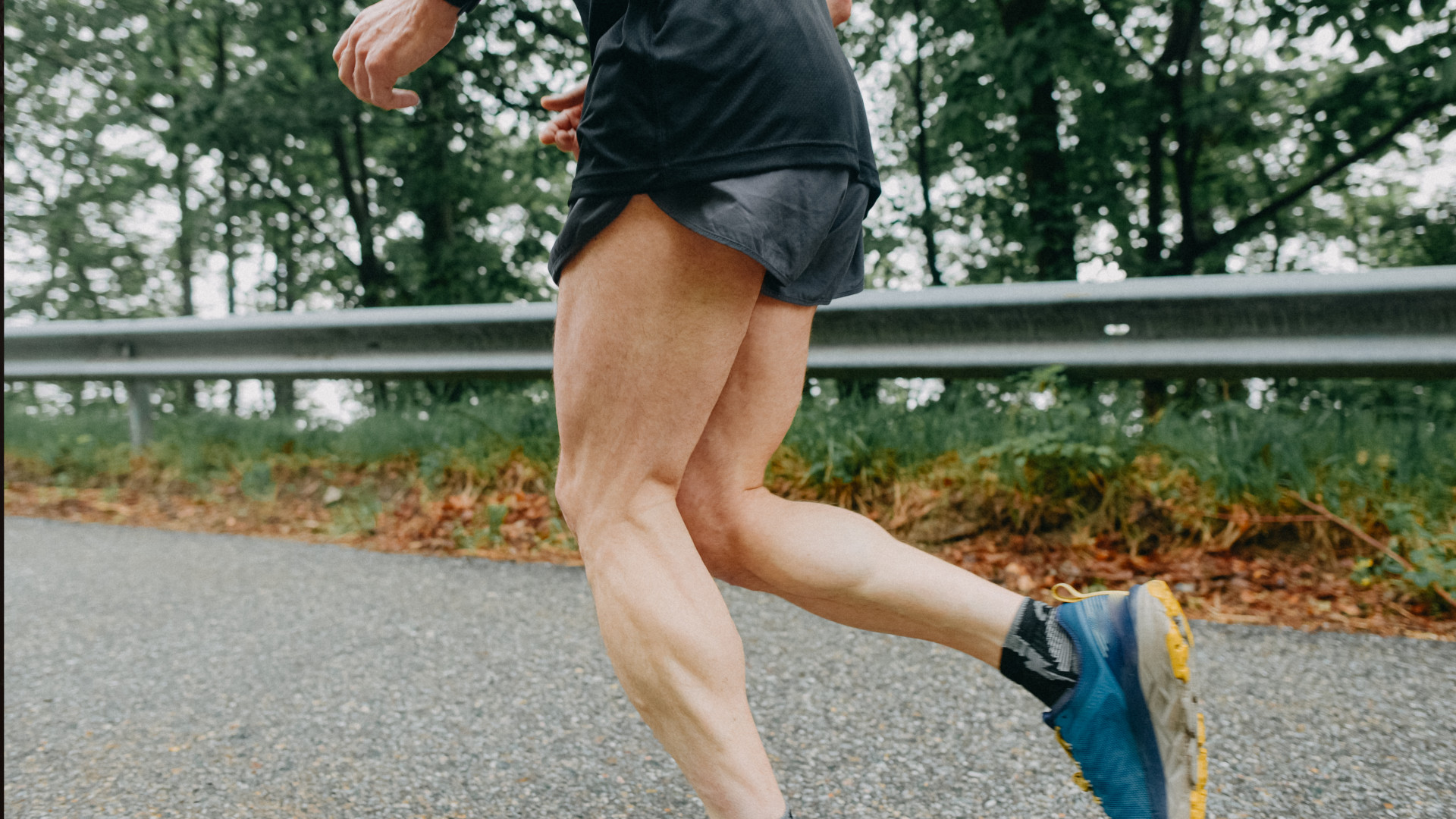
If you can’t touch your toes without seriously bending your knees, that could be a problem. In fact, it’s a clear sign your hamstrings are tight – and that means it’s time to stretch.
But even if you can touch your toes easily, don’t skip your hamstring stretches—flexible hamstrings can enhance performance, improve posture, and help prevent injuries. So, how do you know if your hamstrings need some extra TLC?
“A pulling sensation when you bend forward is a common sign,” explains ex-gymnast and Flexibility Coach, Daria Terekh of Stretching Dublin.
Whether you’re chasing a new PB or just trying to stay injury-free, happy hamstrings are non-negotiable.
The effects of sitting
Think tight hamstrings are just the result of overtraining? Sure – but sitting too much is just as much to blame. “If you sit a lot (who doesn’t?), your hips are probably tight, and your hamstrings are in a shortened position,” says Daria.
“Over time, this lack of movement reduces blood flow and causes the muscles to adapt to inactivity. It can actually lead to injuries, overstretch ligaments, and make your joints unstable,” she adds. “Stretching helps by lengthening the muscle fibres and releasing knots or tension that build up during activity.”
Happy hamstrings

Certain workouts can also lead to tight hamstrings. Sports like football and tennis involve quick sprints and sudden stops, putting these muscles under serious pressure. Runners are especially prone – your hamstrings play a major role in flexing the knee, extending the hip, and generating power with every stride.
“Flexible hamstrings improve running mechanics, making each stride smoother,” says Elli Stenfors, Ironman athlete, Hyrox competitor, and coach. “They’re also essential for explosive movements like jumping and squatting, while protecting the lower back and supporting good posture.”
Bottom line? Healthy, happy hamstrings don’t just help you run better, they’ll level up your entire fitness game too.
Here are 3 easy and effective hamstring stretches every runner should be doing:
1. Elephant walks
What it works: Hamstrings, calves, and lower back
Great for: Building long-lasting flexibility in your posterior chain – especially the hamstrings
Reps: 40 reps (20 each leg)
How to:
- Stand tall with your feet hip-width apart.
- Hinge forward from your hips and place your hands (or fingertips) on the floor in front of you. Bend your knees as much as you need to.
- Keeping your hands grounded, straighten one leg while keeping the other bent, then switch.
- Keep alternating legs like you’re marching in place with stiff legs and high hips, hence the name "elephant walk."
Trainer tip: If you can't reach the floor, use yoga blocks or a chair to bring the ground closer. The aim is a deep, active stretch – not locked knees or forced movement. Focus on control and keep it pain-free.
2. Downward facing dog
Great for: Easing tight hamstrings, decompressing the spine, and boosting full-body mobility
Reps: Hold for 30–60 seconds, repeat 2–3 times
How to do:
- Start in a tabletop position, with your hands under shoulders, knees under hips.
Curl your toes under and walk your hands forward about four inches.
Press into your hands, lift your knees, and send your hips up and back, towards where the wall meets the ceiling.
Spread your fingers wide and root down through your index fingers and thumbs.
Keep pushing back through your heels as you stay strong in your V position.
Trainer tip: Super tight hammies? Keep your knees bent. This helps protect your lower back and lets you focus on lifting your hips high to form that strong, inverted V-shape.
3. Round to reach
Great for: Easing tight hamstrings, glutes, and your spine. This move not only strethes the hamstrings but will also help keep your nerves mobile and flexible
Reps: 10 per side
How to do:
- Sit tall with your feet hip-width apart and knees bent.
- Tuck your chin to your chest and slowly roll backwards through your spine until your shoulders touch the floor.
- Roll forward again, then extend your right leg out straight in front of you.
- Lean your chest over your front leg and reach for your toes.
- Return to the start, roll back, and repeat on your left side.
Trainer tip: Move with control and focus. Roll through your spine smoothly and reach long through each leg. You should feel a gentle hamstring stretch, along with a nice release through the back and shoulders.
Hamstrings can be stubborn, and they need to be stretched the right way. So if the journey to more flexible hammies feels tougher than you expected, don’t panic. That’s totally normal.
Stick with it, stay consistent, and trust the process. It’ll absolutely be worth it – and before long, you’ll be moving better, running stronger, and feeling the difference with every stride.







